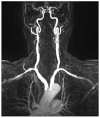Vascular Diseases in Women: Do Women Suffer from Them Differently?
- PMID: 38398419
- PMCID: PMC10889109
- DOI: 10.3390/jcm13041108
Vascular Diseases in Women: Do Women Suffer from Them Differently?
Abstract
According to the World Health Organization, cardiovascular disease (CVD) is the leading cause of death among women worldwide, yet its magnitude is often underestimated. Biological and gender differences affect health, diagnosis, and healthcare in numerous ways. The lack of sex and gender awareness in health research and healthcare is an ongoing issue that affects not only research but also treatment and outcomes. The importance of recognizing the impacts of both sex and gender on health and of knowing the differences between the two in healthcare is beginning to gain ground. There is more appreciation of the roles that biological differences (sex) and sociocultural power structures (gender) have, and both sex and gender affect health behavior, the development of diseases, their diagnosis, management, and the long-term effects of an illness. An important issue is the knowledge and awareness of women about vascular diseases. The risk of cardiovascular events is drastically underestimated by women themselves, as well as by those around them. The purpose of this review is to draw attention to improving the medical care and treatment of women with vascular diseases.
Keywords: gender differences; risk factors; vascular diseases; women.
Conflict of interest statement
The authors declare no conflicts of interest.
Figures
References
-
- Mauvais-Jarvis F., Bairey Merz N., Barnes P.J., Brinton R.D., Carrero J.J., DeMeo D.L., De Vries G.J., Epperson C.N., Govindan R., Klein S.L., et al. Sex and gender: Modifiers of health, disease, and medicine. Lancet. 2020;396:565–582. doi: 10.1016/S0140-6736(20)31561-0. Erratum in Lancet 2020, 396, 668. - DOI - PMC - PubMed
Publication types
LinkOut - more resources
Full Text Sources






